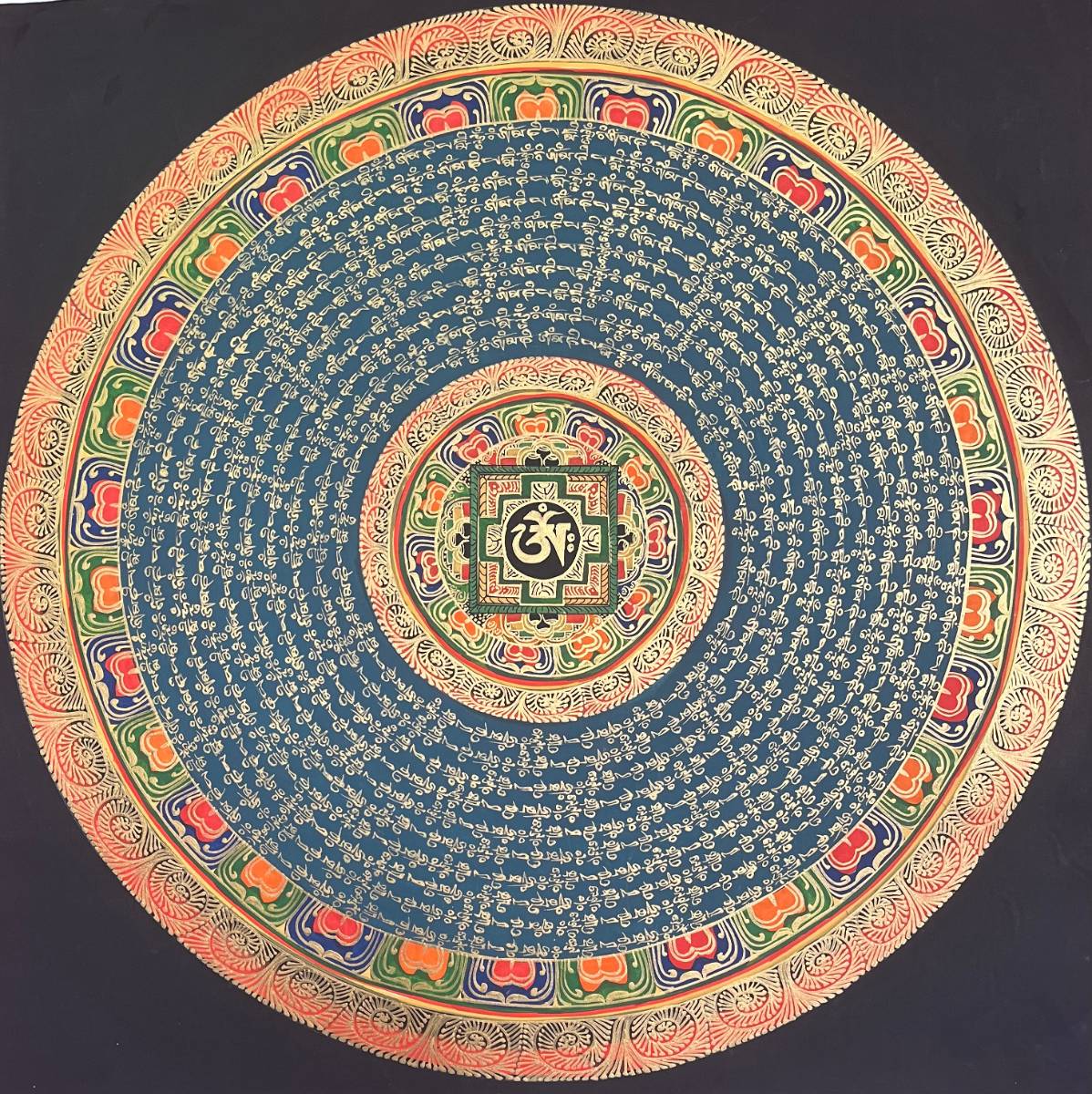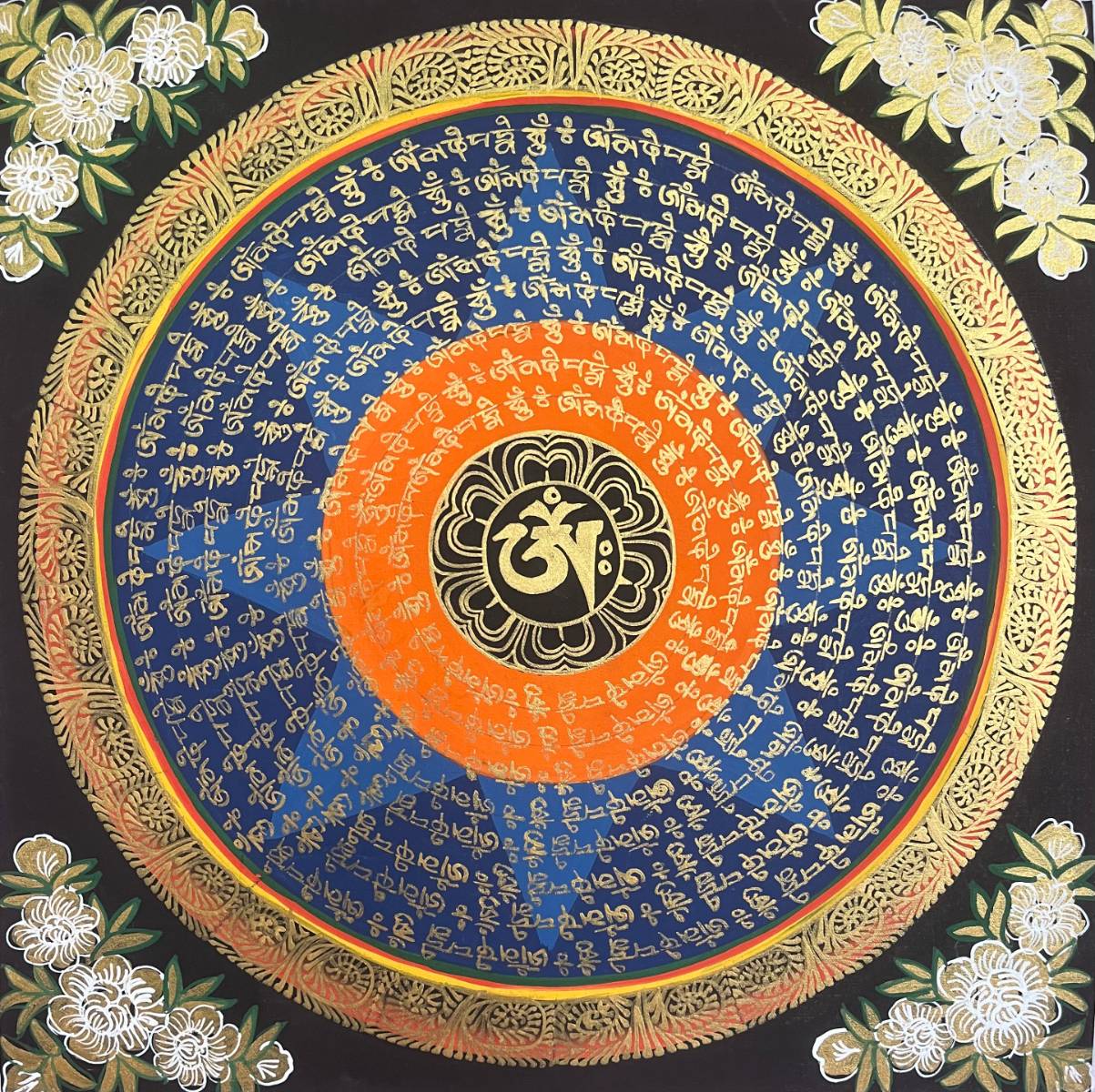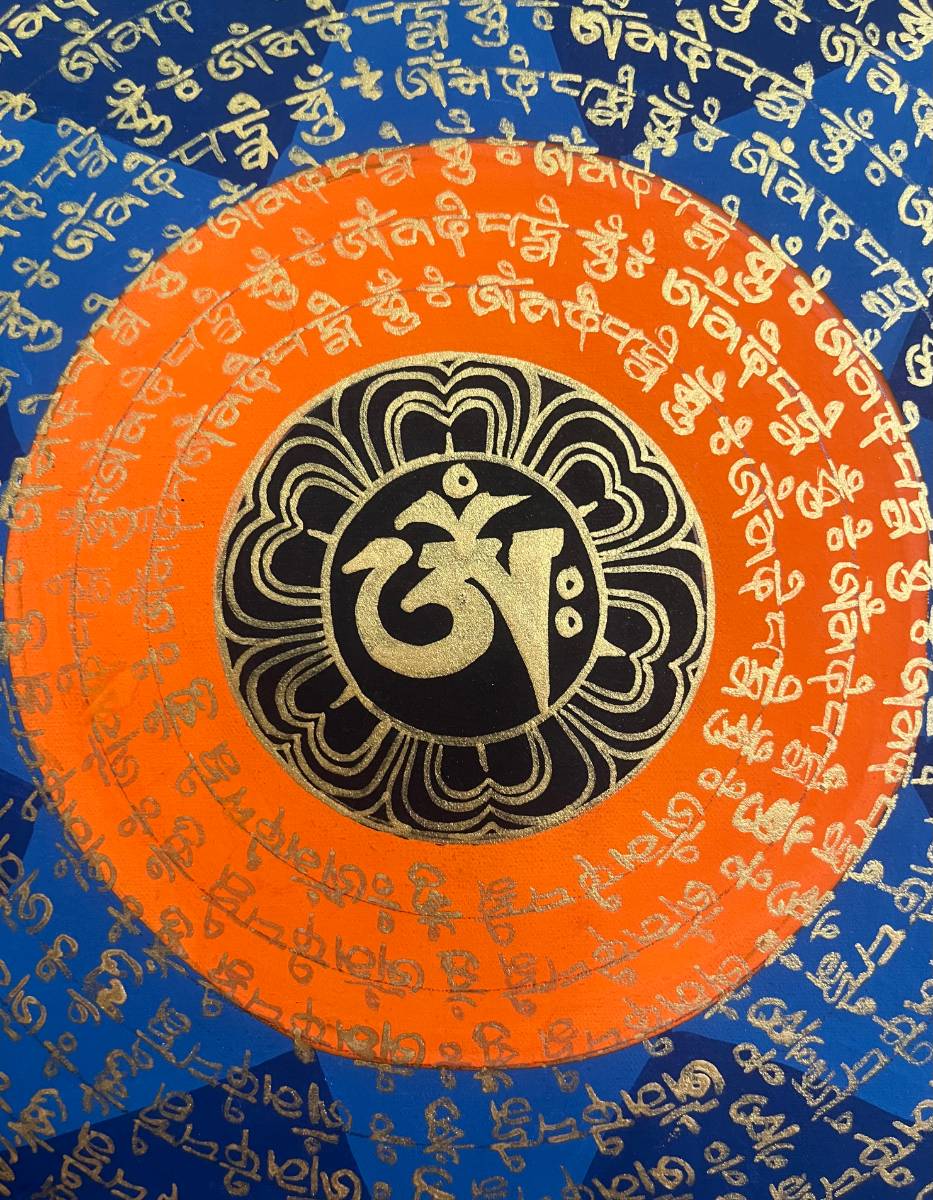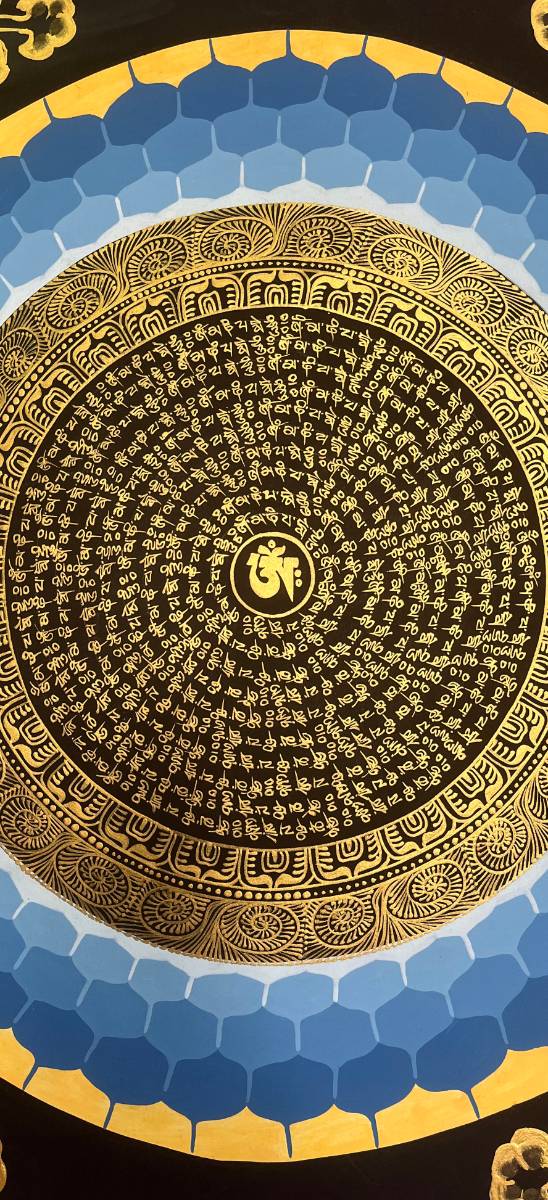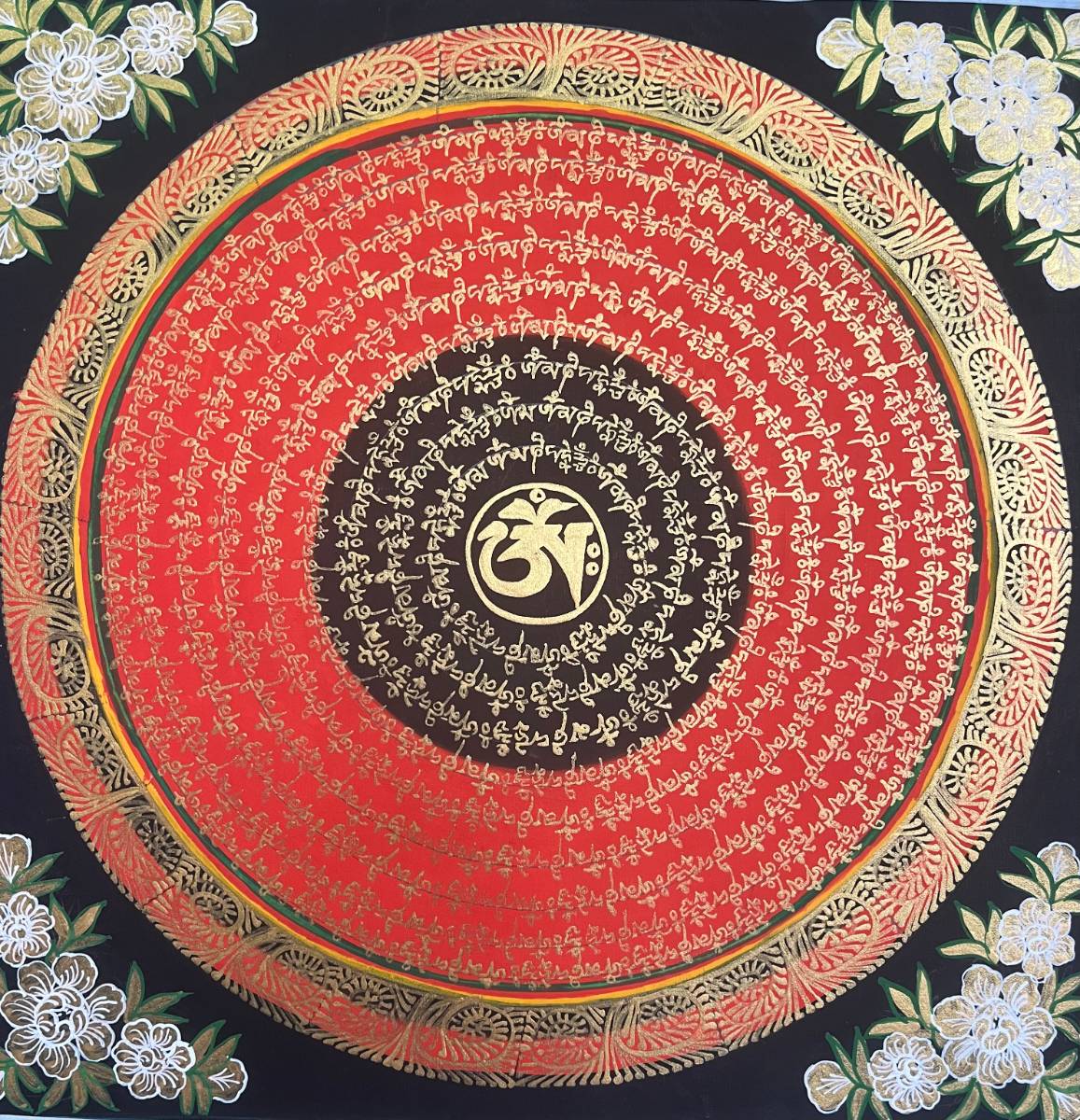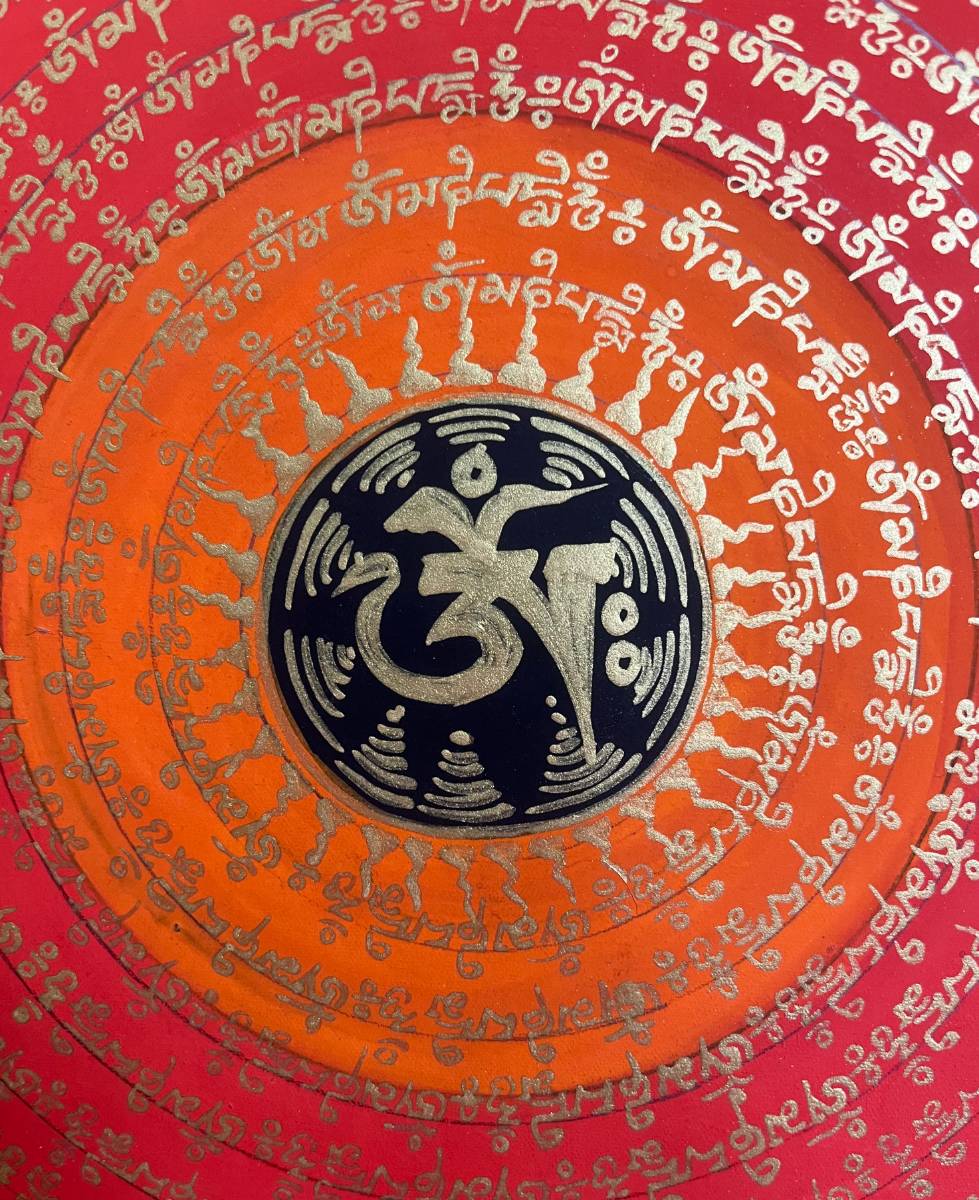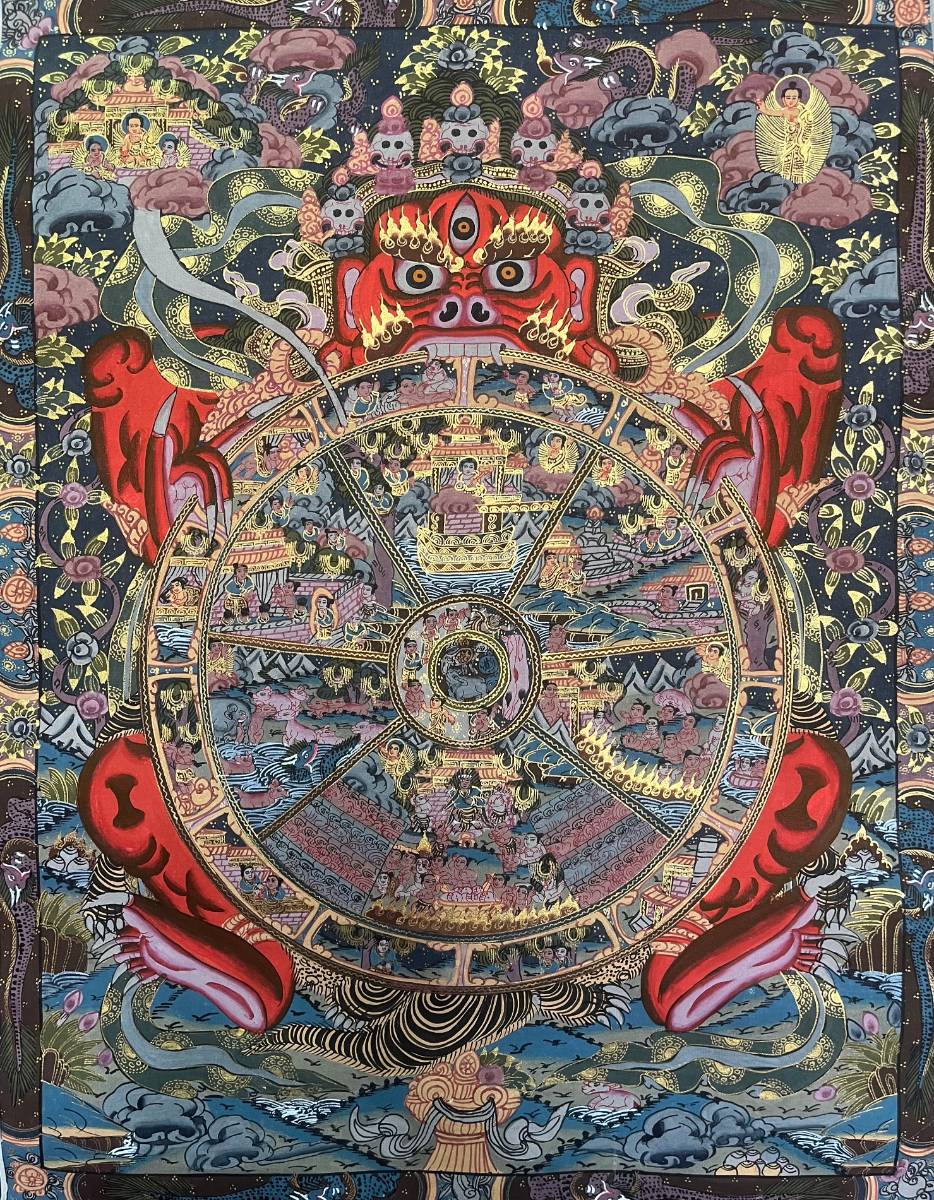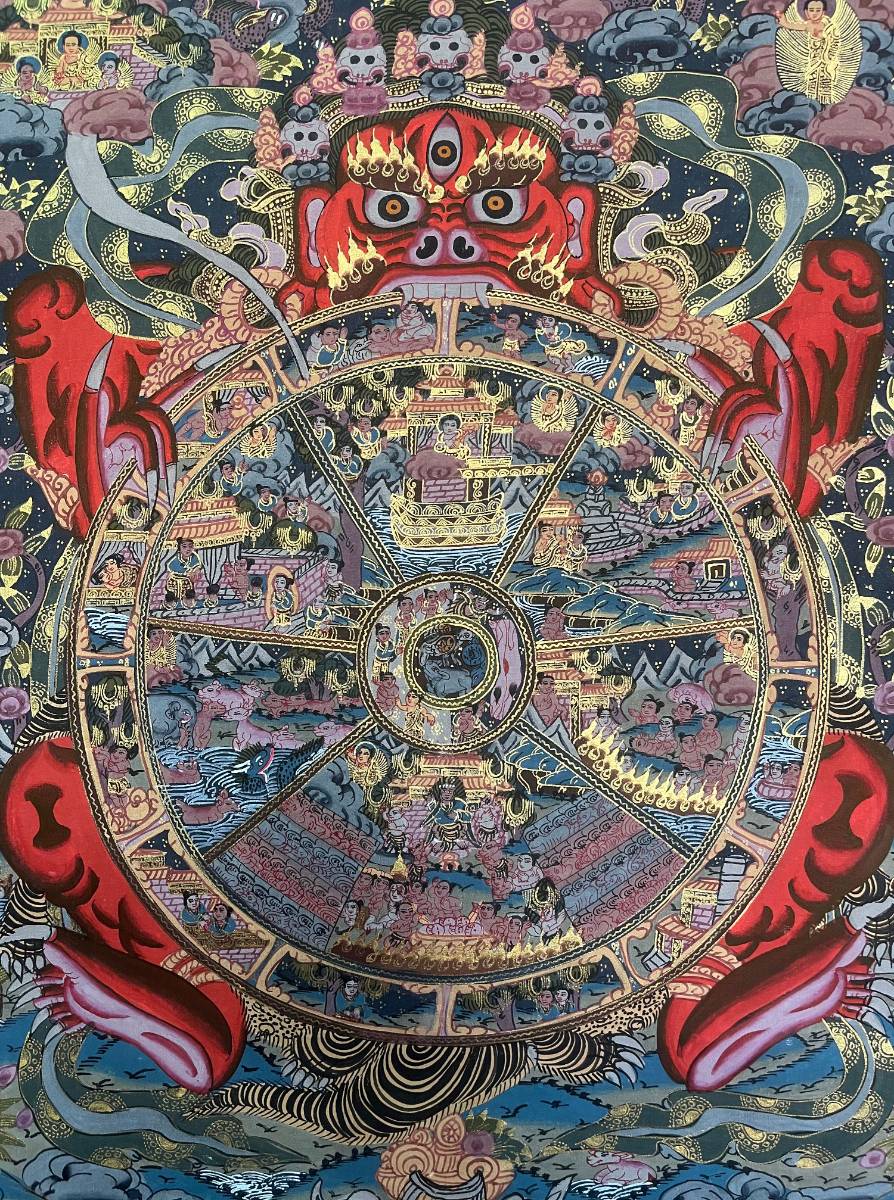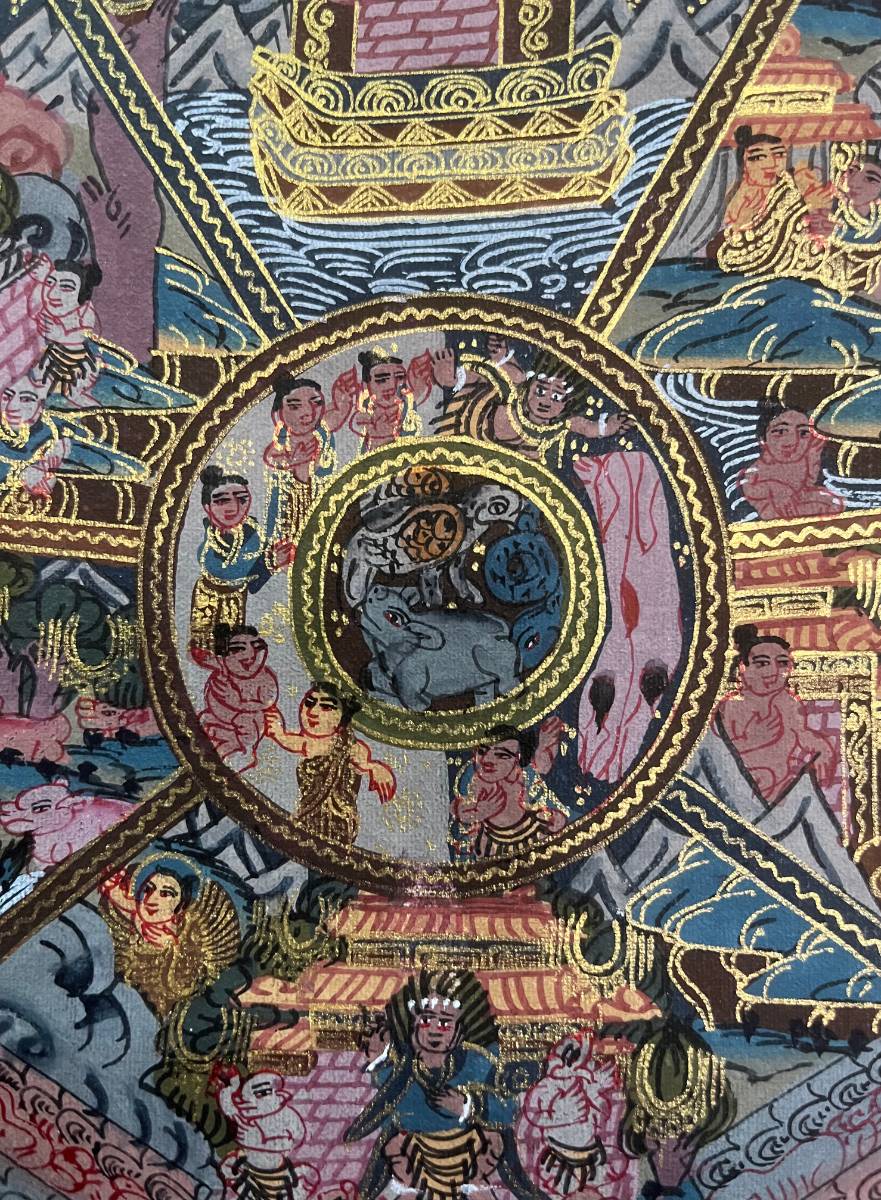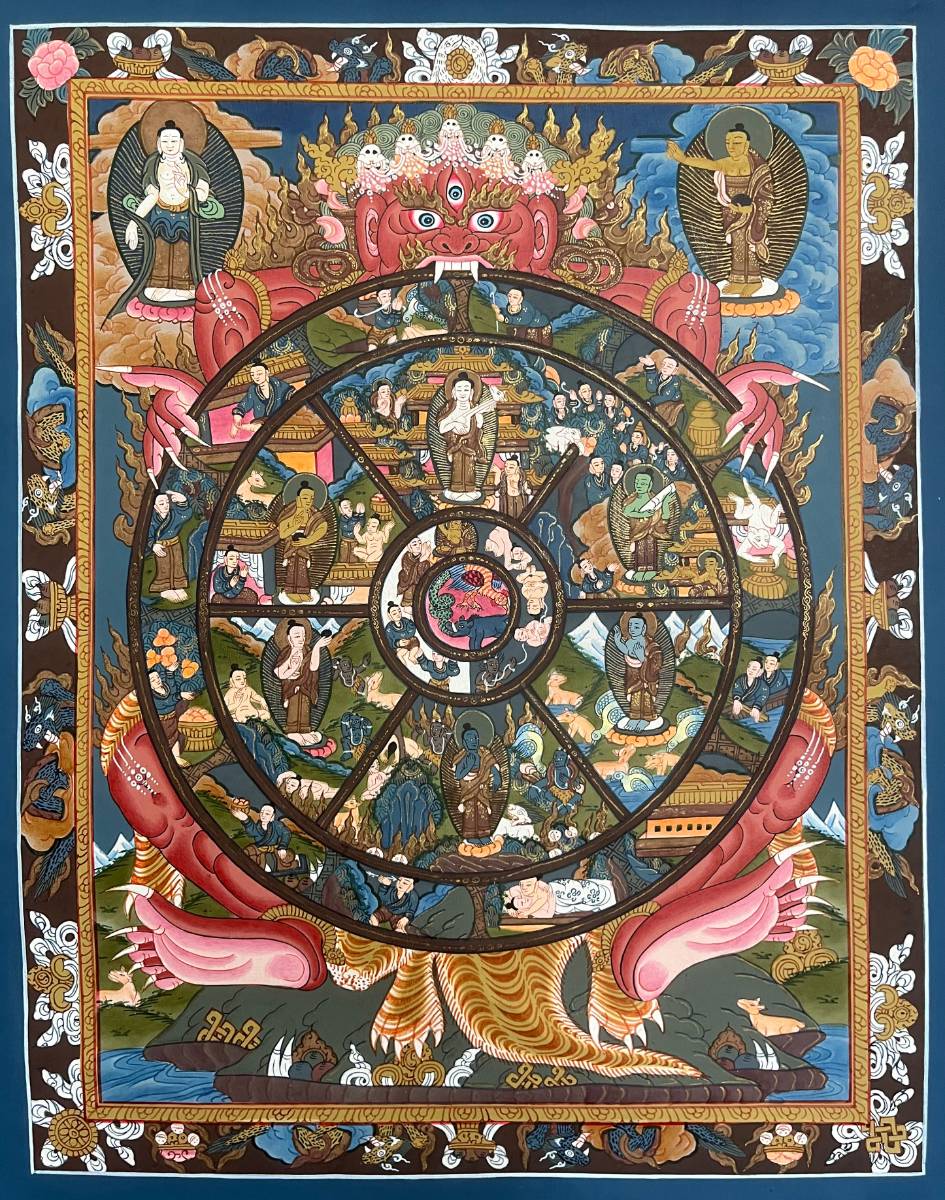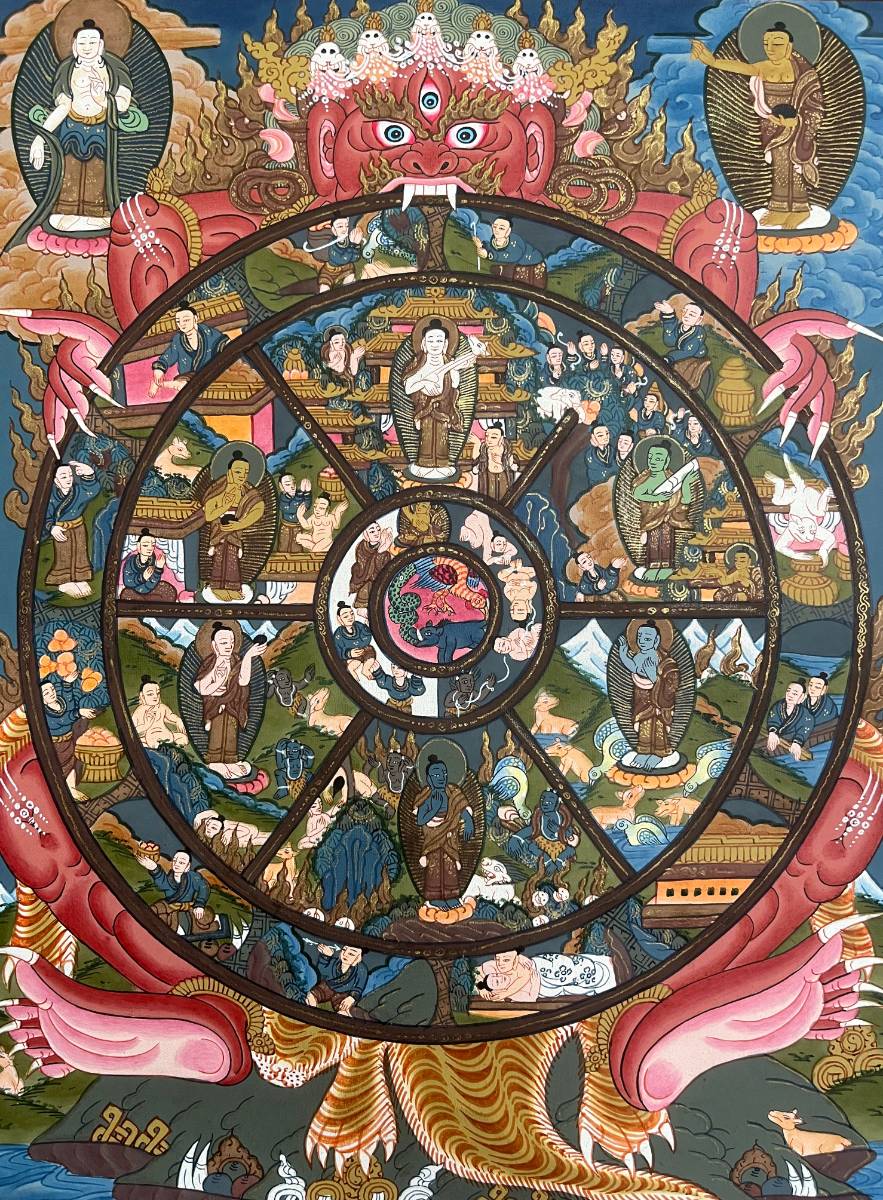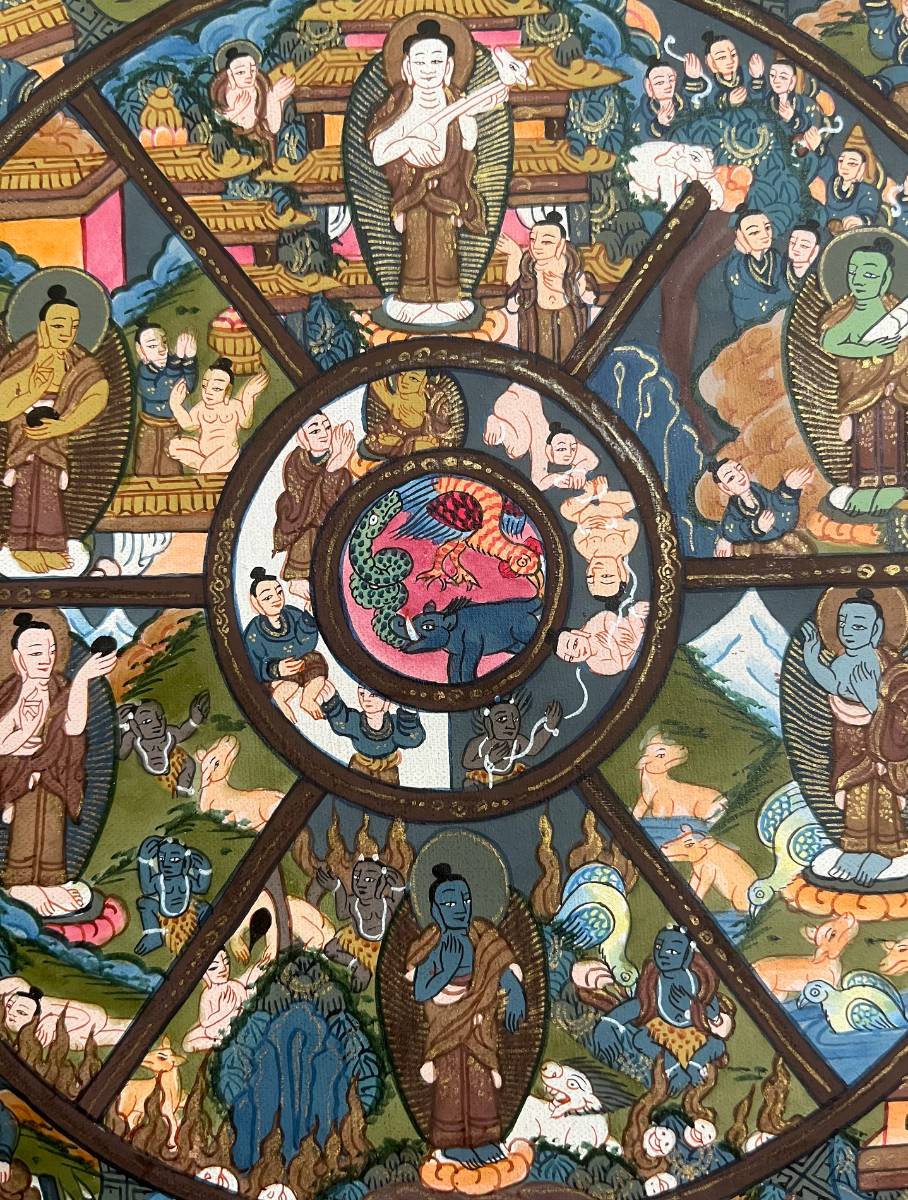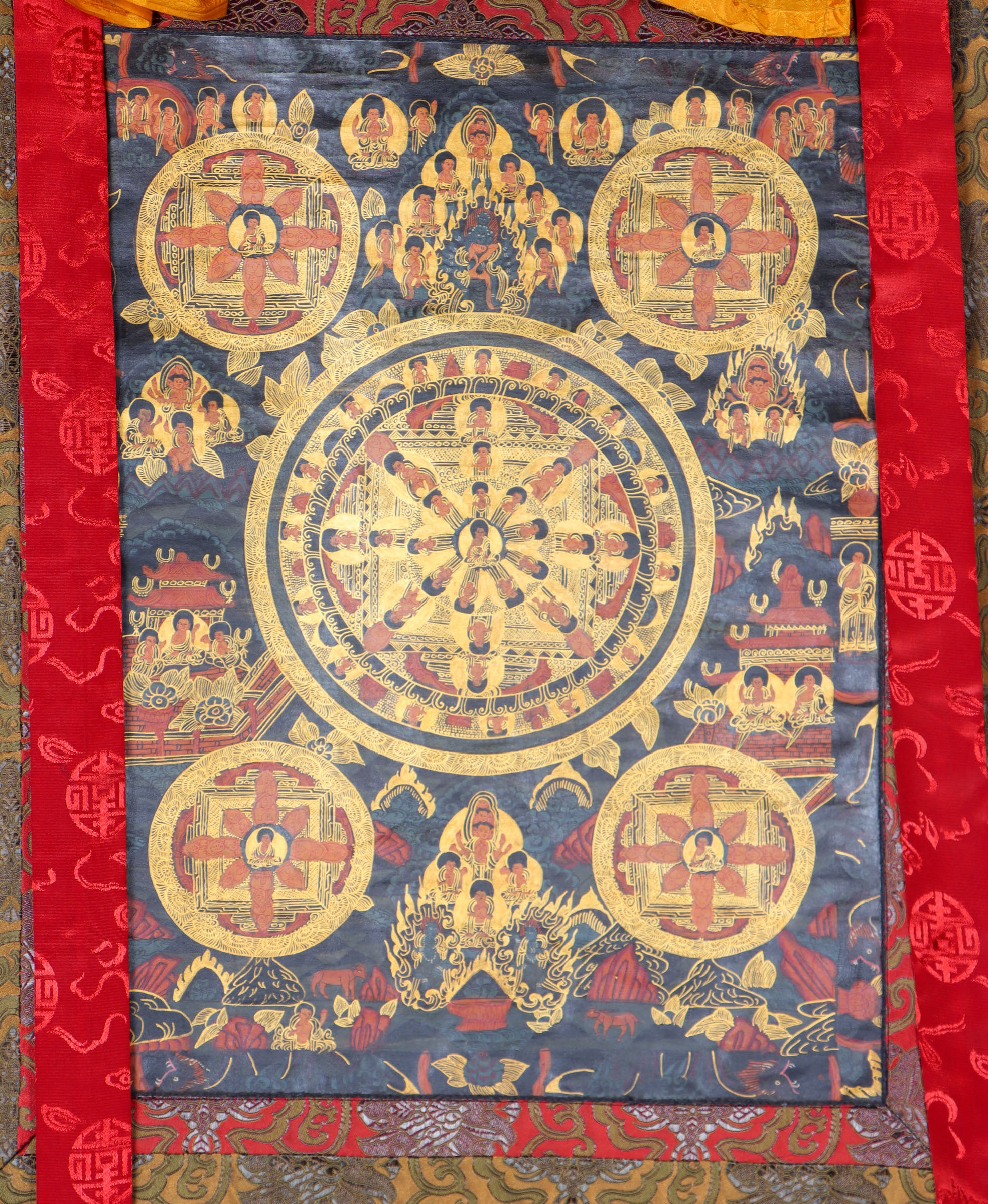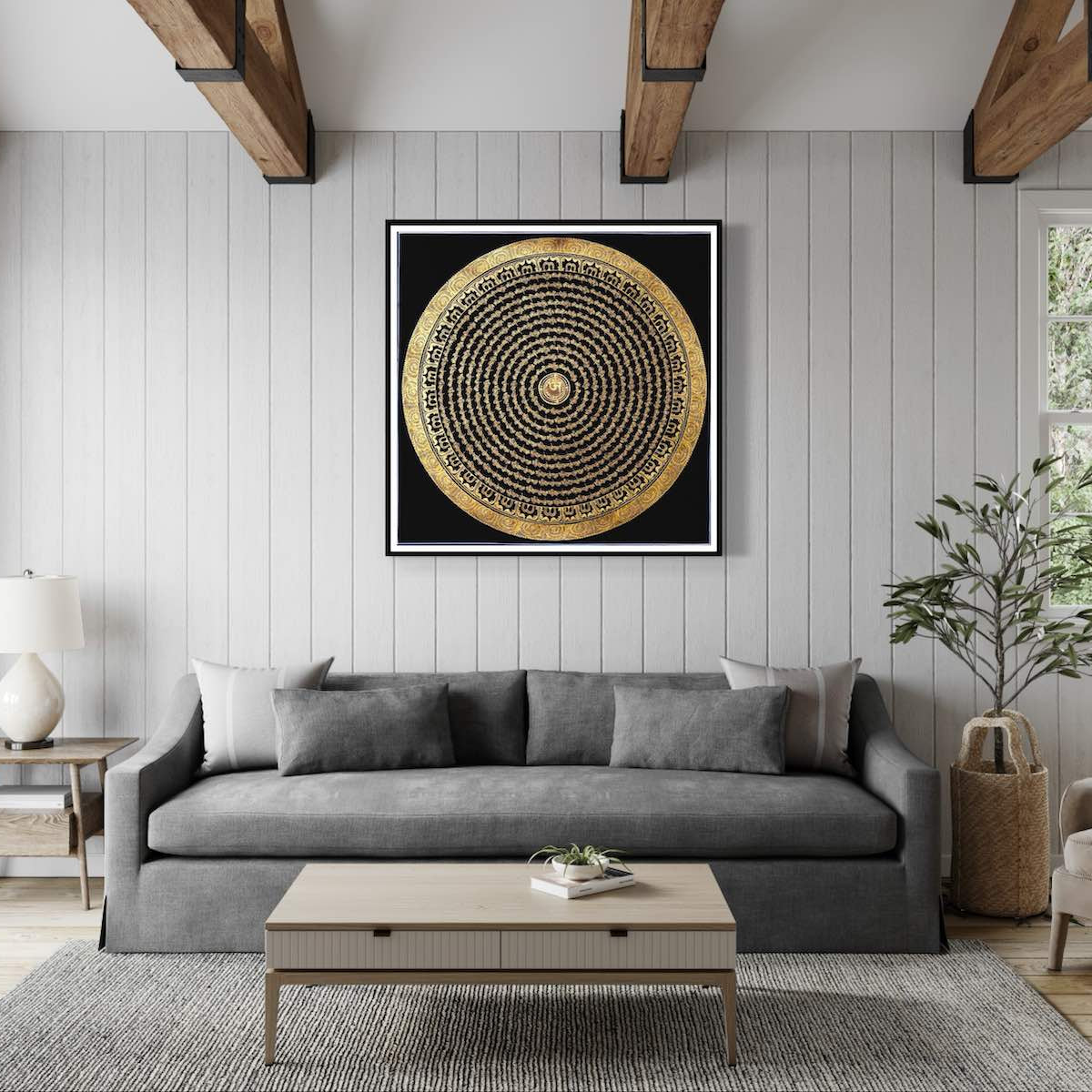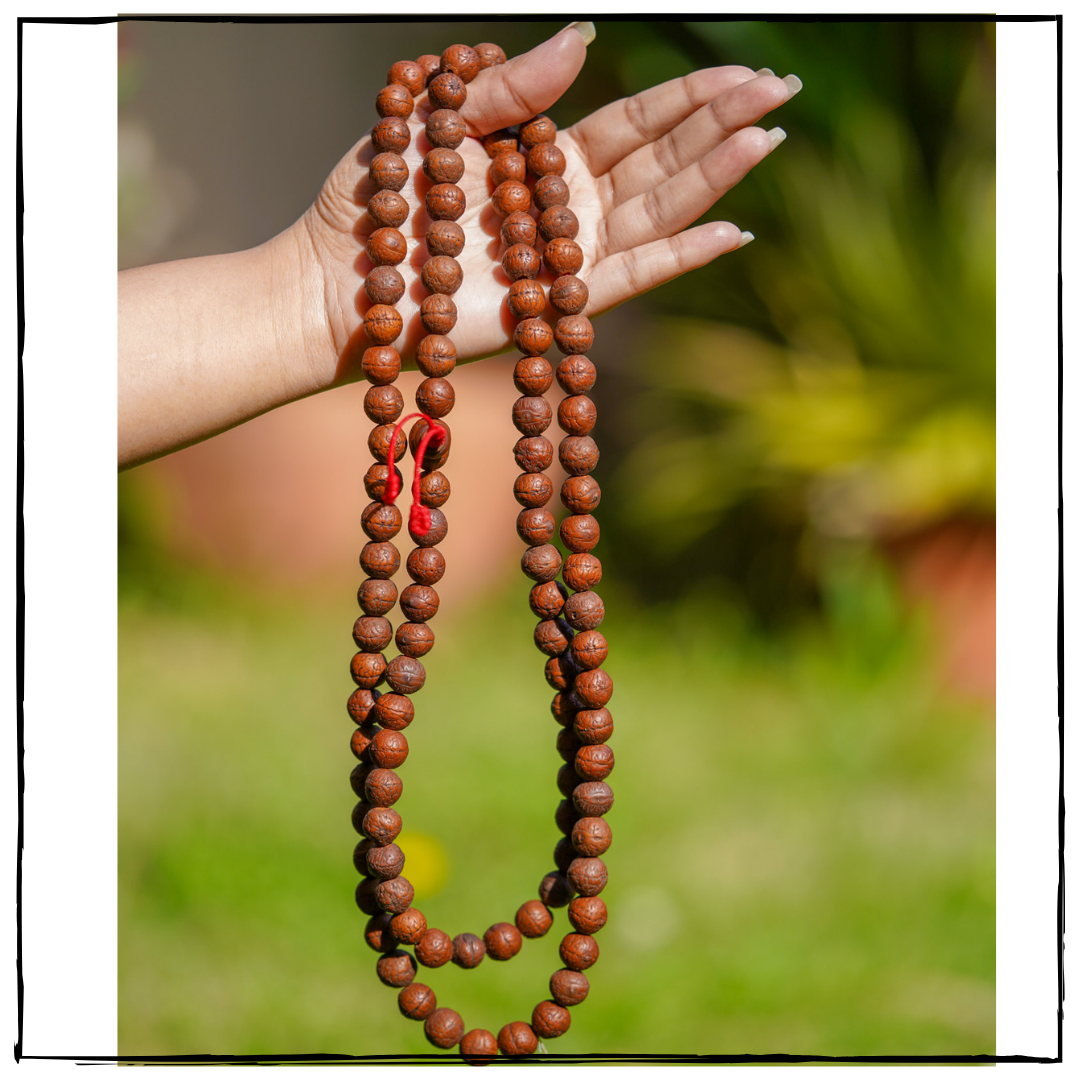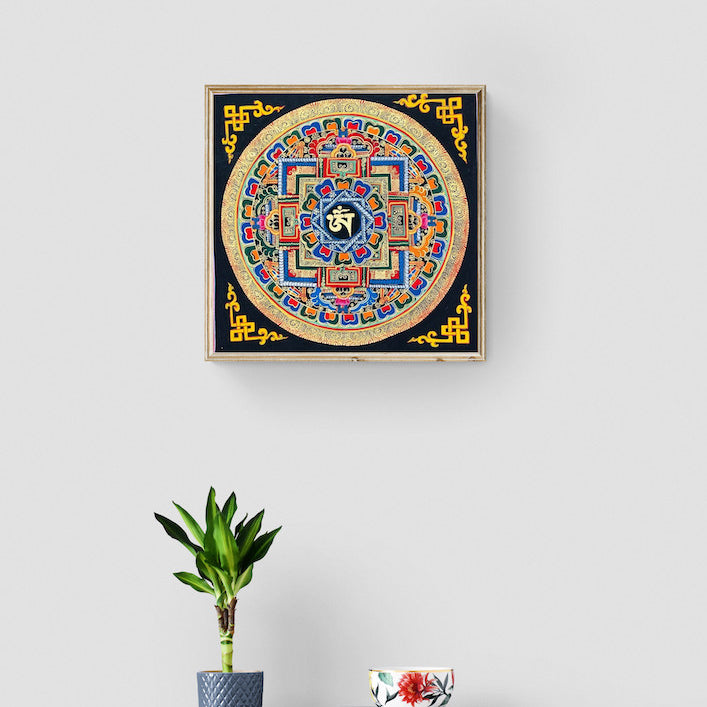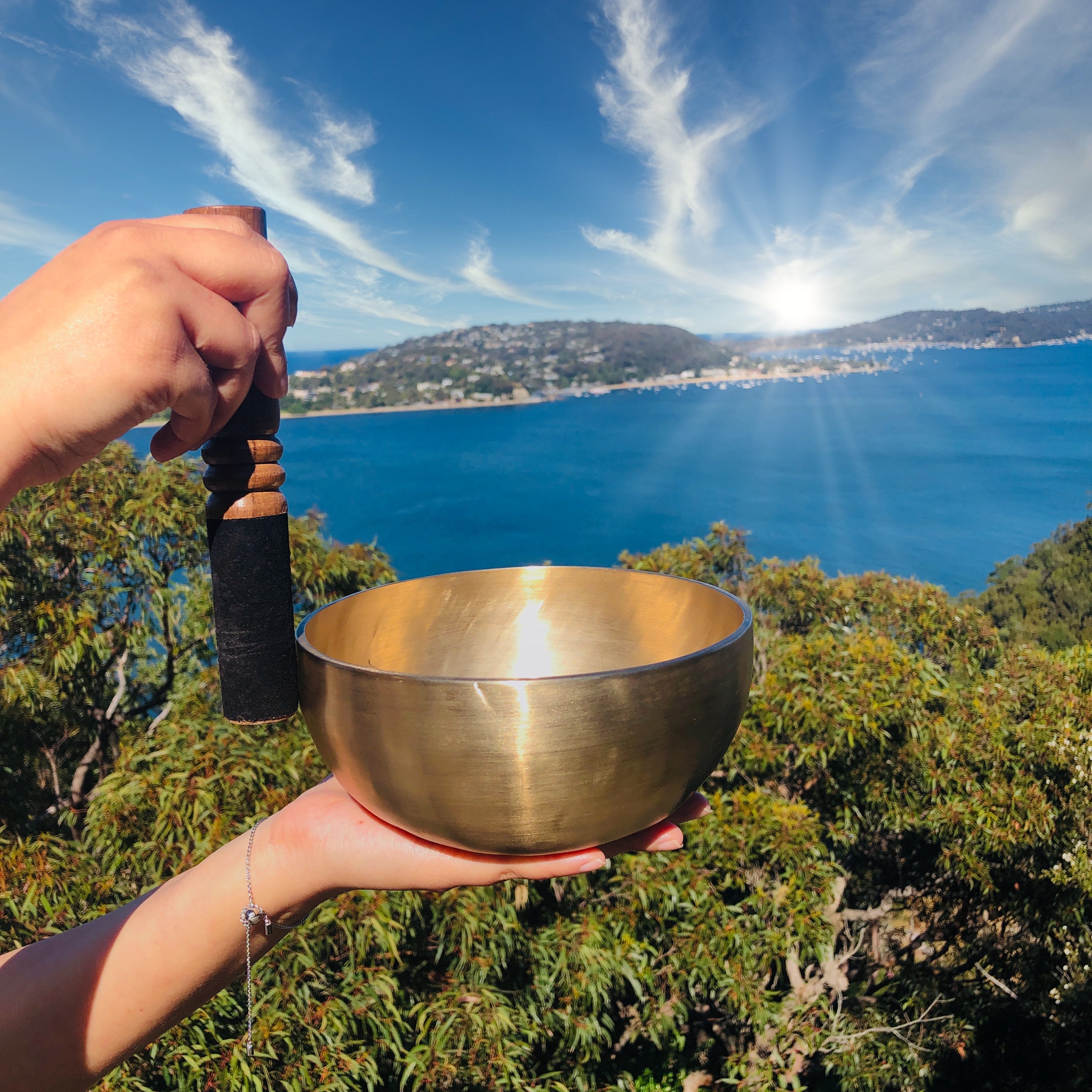5 Buddha Mandala Brocade Thangka
Couldn't load pickup availability
Description
Buddha Mandala Thangka Brocade is used as an ornamental border or frame for thangka paintings that feature Buddha or other deities. Usually, it is constructed of highly colored silk brocade with elaborate patterns and decorations. The brocade provides a rich and beautiful border while enhancing the thangka painting's beauty and holiness.
A center representation of the Buddha, Shakyamuni Buddha, who is regarded as the historical Buddha, is seen in Buddha Mandala Thangkas. A certain mudra (hand gesture) and meditation posture are used to represent the Buddha in art, who appears to be peaceful, compassionate, and enlightened. The surrounding mandala's symmetrical and geometric arrangement represents the cosmos' order and the interdependence of all occurrences. Buddhist symbolism and iconography serves as the inspiration for themes on the Buddha Mandala Thangka Brocade.
The Buddha Mandala Thangka Brocade has symbolic value in addition to its function as a beautiful ornament. It symbolizes the holiness and awe connected to the portrayal of Buddha or other enlightened creatures. It establishes a clear separation between the picture and its surrounds, emphasizing the focal point and luring viewers in for reflection and dedication.
Product Specification:
- Hand Painted
- Materials: Semi-Precious Natural Minerals
- Base: Cotton Canvas
- Origination: Nepal

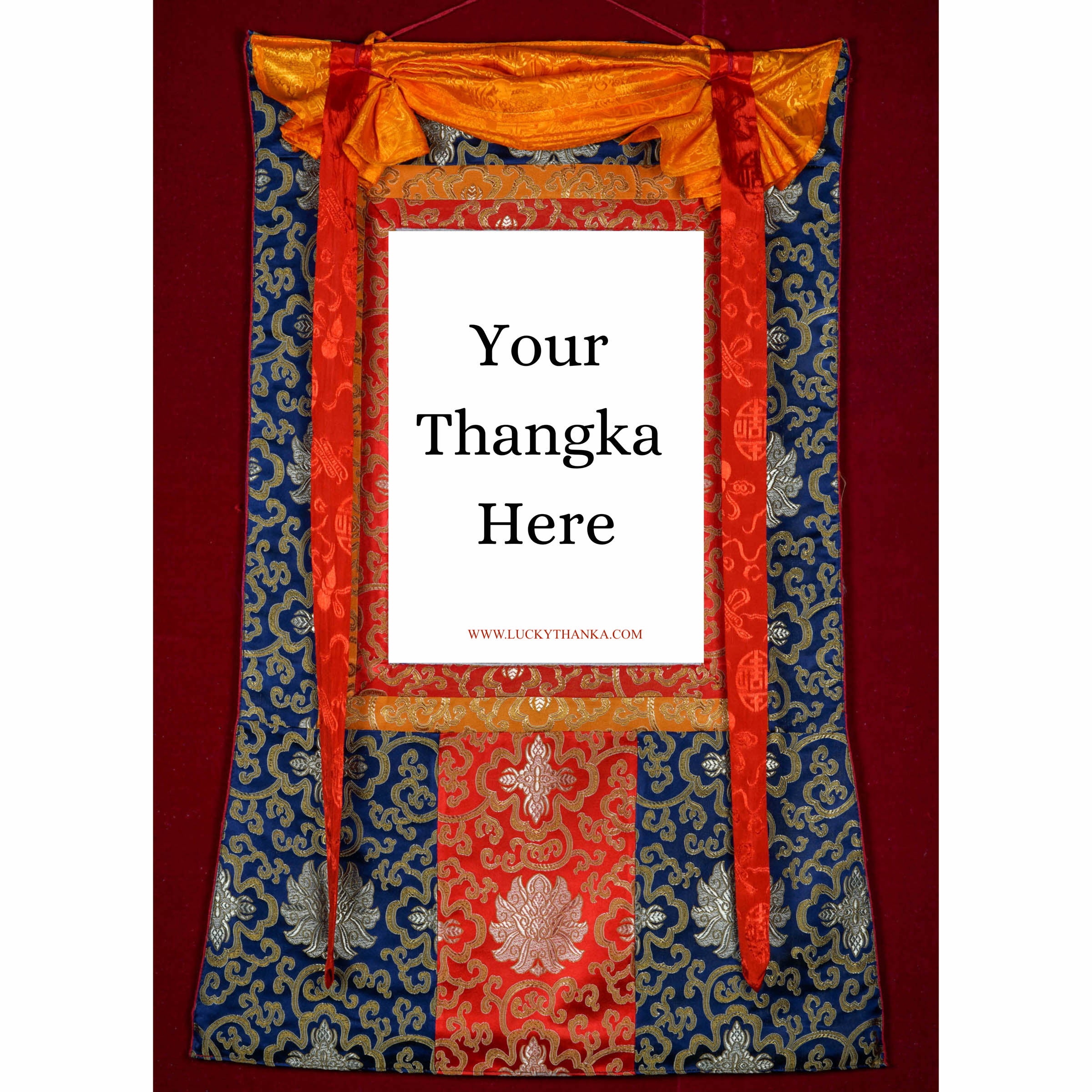
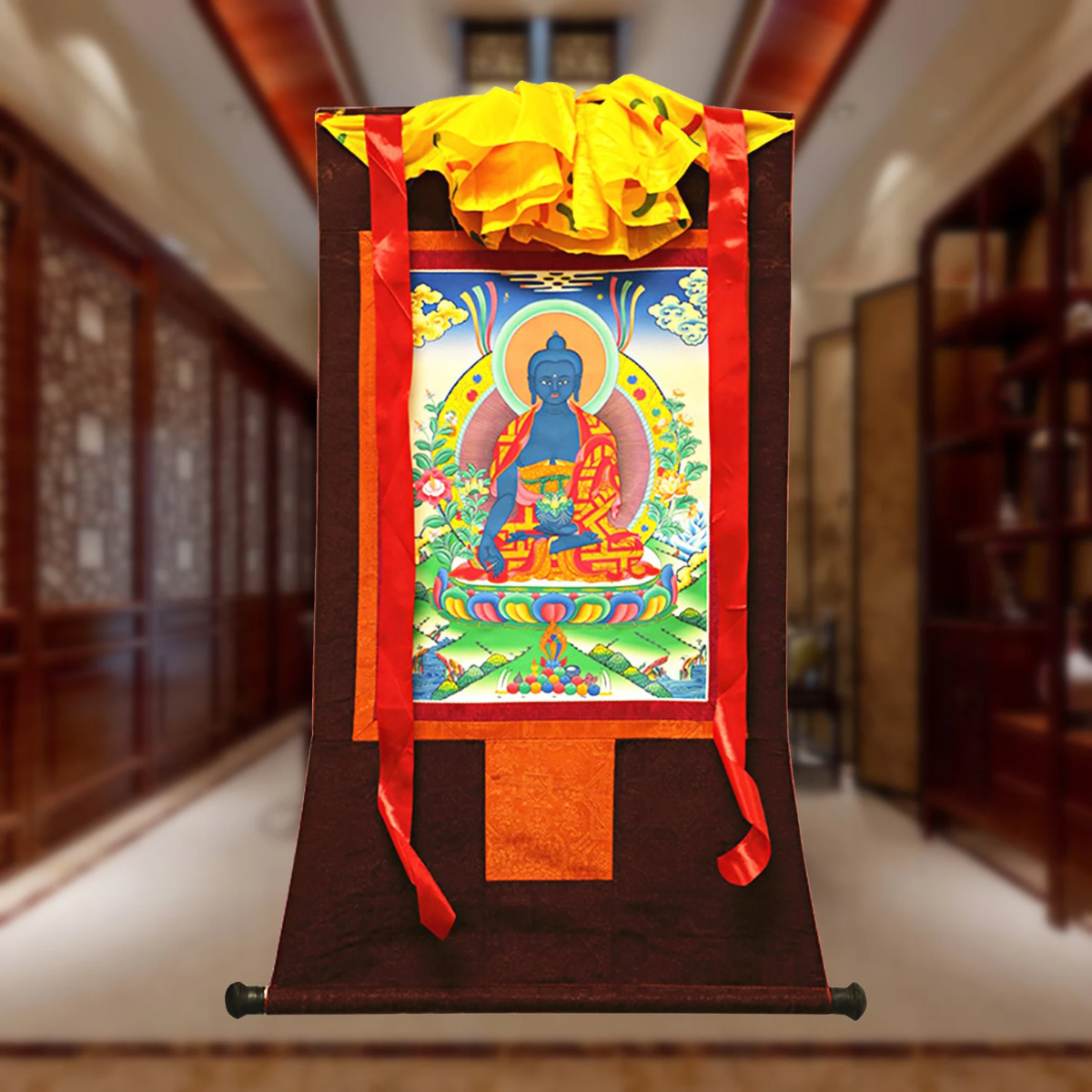
Hand Embroidery Brocade
Want to add a Brocade to your beautiful Thangka Painting? Traditional Style Brocade has been one of the most popular form of mounting as it has a greater religious merit.
Note: Make sure you have added the Thangka to your cart first.
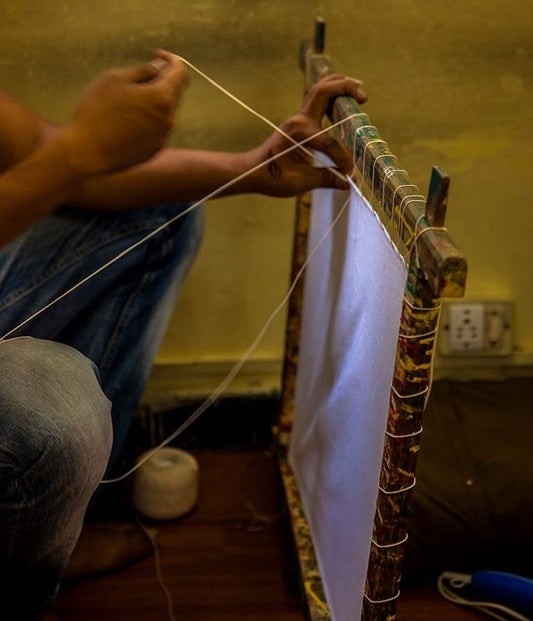
100% Cotton Canvas
Preparing the Cotton canvas before starting to paint a Thangka. This process includes washing, drying, stretching, sizing and everything needed to make a perfect base for the thangka to last for centuries.
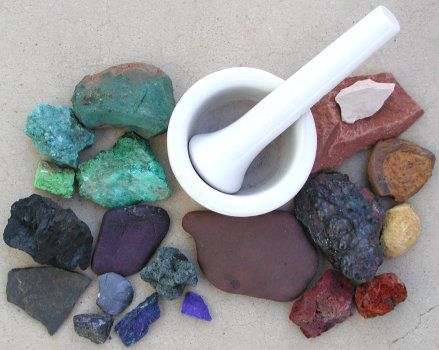
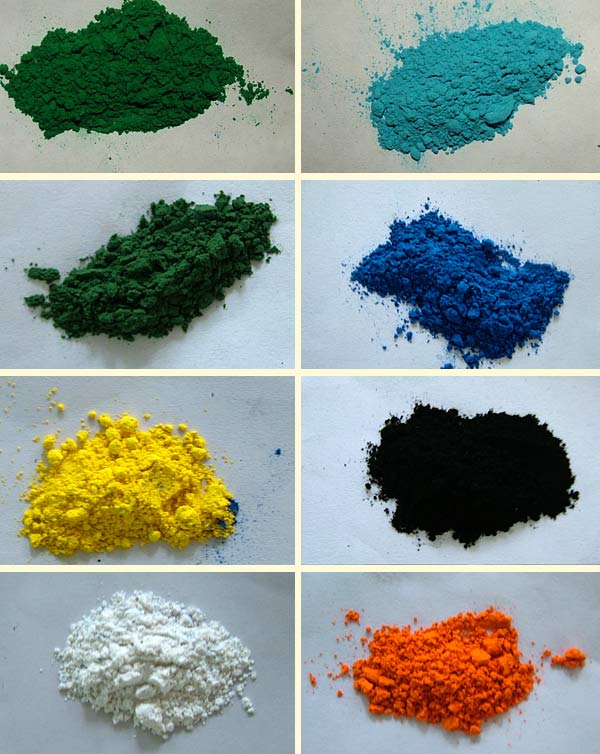
Natural Minerals
Thangka Paintings are painted using the natural minerals. These are firstly grind into the powder form and then used in the thangka as a paint.




